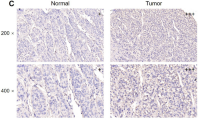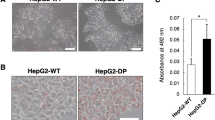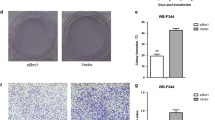Summary
The effects of PEG10 on hydrogen peroxide (H2O2)-induced apoptosis in human normal liver cell line L02 were investigated. The PEG10 gene was transfected into L02 cells by lipofectamine, the positive clone was screened by G418 and defined as L02/PEG10, while the cell transfected with empty expression vector (pEGFP-N1) was defined as L02/vector. L02/vector and parental L02 cells served as control. RT-PCR and Western blotting were employed to detect the expression of target genes. H2O2 (50–400 mmol/L) was administered to induce the apoptosis of L02 cells. Cells viability was measured by MTT and the morphological changes of apoptotic cells were determined by fluorescence microscopy using hoechst33342 nuclei staining. DNA fragmentation was observed by agarose gel electrophoresis. PEG10 mRNA and protein levels in L02/PEG10 cells were significantly increased as compared with those in the control cells. After treatment with 400 mmol/L H2O2 for 24 h, the cellular growth inhibition rate of L02/PEG10 cells was significantly lower (58.2%) than that of L02 (92.5%) and L02/vector (88%). Distinct morphological changes characteristic of cell apoptosis such as karyopyknosis and conglomeration were not observed in L02/PEG10. Ladder-like DNA fragmentation in a dose-dependent manner was observed in both L02 and L02/vector cell lines, but not in L02/PEG10. PEG10 over-expression significantly inhibited cytotoxicity induced by H2O2 on human normal liver cell line L02 by antagonizing H2O2-induced apoptosis.
Similar content being viewed by others
References
Yuen MF, Cheng CC, Lauder IJ, et al. Early detection of hepatocellular carcinoma increases the chance of treatment: Hong Kong experience. Hepatology, 2000, 31(2):330–335
Ono R, Kobayashi S, Wagatsuma H, et al. A retrotransposon-derived gene, PEG10, is a novel imprinted gene located on human chromosome 7q21. Genomics, 2001,73(2):232–237
Ono R, Shiura H, Aburatani H, et al. Identification of a large novel imprinted gene cluster on mouse proximal chromosome 6. Genome Res, 2003,13(7):1696–1705
Ono R, Nakamura K, Inoue K, et al. Deletion of Peg10, an imprinted gene acquired from a retrotransposon, causes early embryonic lethality. Nat Genet, 2006,38(1):101–106
Ip WK, Lai PB, Wong NL, et al. Identification of PEG10 as a progression related biomarker for hepatocellular carcinoma. Cancer Letters, 2007,250(2):284–291
Tsou AP, Chuang YC, Su JY, et al. Overexpression of a novel imprinted gene, PEG10, in human hepatocellular carcinoma and in regenerating mouse livers. J Biomed Sci, 2003,10(6 Pt 1):625–635
Li CM, Margolin AA, Salas M, et al. PEG10 is a c-MYC target gene in cancer cells. Cancer Res, 2006,66(2): 665–672
Jia HL, Ye QH, Qin L X, et al. Gene expression profiling reveals potential biomarkers of human hepatocellular carcinoma. Clin Cancer Res, 2007,13(4):1133–1139
Wang XW, Hussain SP, Huo TI, et al. Molecular pathogenesis of human hepatocellular carcinoma. Toxicology, 2002,43(7):181–182
Chang Y, Tao LW, Chen XP, et al. Specificity and significance of expression of imprinted gene PEG10 in hepatocellular carcinoma. World Chin J Digestol, 2005, 13(12):1408–1411
Toyokuni S. Novel Aspects of Oxidative Stress-Associated Carcinogenesis. Antioxid Redox Signal, 2006,8(7–8): 1373–1377
Olaya N. Oxidative stress and inflammation in liver carcinogenesis. Iatreia, 2007,20(1):S–20
López-Lázaro M. Dual role of hydrogen peroxide in cancer: Possible relevance to cancer chemoprevention and therapy. Cancer Letters, 2007,252(1):1–8
Ly JD, Grubb DR, Lawen A. The mitochondrial membrane potential (deltapsi(m)) in apoptosis; an update. Apoptosis, 2003,8(2):115–128
Hale AJ, Smith CA, Sutheland LC, et al. Apoptosis: molecular regulation of cell death. Eur J Biochem, 1996, 236(1):1–26
Jiang B, Liu JH, Bao YM, et al. Catalpol inhibits apoptosis in hydrogen peroxide-induced PC12 cells by preventing cytochrome C release and inactivating of caspase cascade, Toxicon, 2004,43(1):53–59
Clement MV, Hirpara JL, Pervaiz S. Decrease in intracellular superoxide sensitizes Bcl-2-overexpressing tumor cells to receptor and drug-induced apoptosis independent of the mitochondria. Cell Death Differ, 2003, 10(11):1273–85
Wei YH, Lee HC. Oxidative stress, mitochondrial DNA mutation, and impairment of antioxidant enzymes in aging. Exp Biol Med, 2002,227(9):671–682.
Okabe H, Satoh S, Furukawa Y, et al. Involvement of PEG10 in human hepatocellular carcinogenesis through interaction with SIAH1. Cancer Res, 2003,63(12): 3043–3048
Huang J, Lin JS, Dong XY, et al. Effects of siRNA enkaryotic expression vectors targeting PEG10 gene on cell cycle in HepG2 cells. Chin J Gastroenterol Hepatol, 2007,16(1): 33–35
Huang J, Lin JS, Chang Y, et al. The construction and identification of siRNA eukaryotic expression vector targeting genetic imprinted gene PEG10. Cancer Res Prev Treat (Chinese), 2007,34(2):86–88
Jie X, Lang C, Jian Q, et al. Androgen activates PEG10 to promote carcinogenesis in hepatic cancer cells. Oncogene, 2007,26(39):5741–5751
Baud O, Greene AE, Li J, et al. Glutathione peroxidase-catalase cooperativity is required for resistance to hydrogen peroxide by mature rat oligodendrocytes. J Neurosci, 2004,24(7):1531–1540
Shinkai M, Shinomiya N, Kanoh S, et al. Oxygen stress effects on proliferation rates and heat shock proteins in lymphocytes. Aviat Space Environ Med, 2004,75(2): 109–113
Huang J, Sheng HH, Shen T, et al. Correlation between genomic DNA copy number alterations and transcriptional expression in hepatitis B virus-associated hepatocellular carcinoma. FEBS Lett, 2006,580(15):3571–3581
Author information
Authors and Affiliations
Additional information
This project was supported by grants from National Natural Sciences Foundation of China (No. 30471983, 30872237) and Major State Basic Research Development Program of China (973 Program) (No. 2007CB512900).
Rights and permissions
About this article
Cite this article
Liu, Y., Huang, H., Lin, J. et al. Suppressive effects of genomic imprinted gene PEG10 on hydrogen peroxide-induced apoptosis in L02 cells. J. Huazhong Univ. Sci. Technol. [Med. Sci.] 29, 705–709 (2009). https://doi.org/10.1007/s11596-009-0606-2
Received:
Published:
Issue Date:
DOI: https://doi.org/10.1007/s11596-009-0606-2




